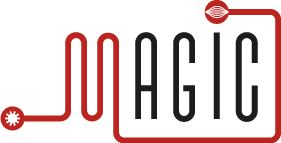Meet Dr Kate Adcock from Muscular Dystrophy UK
Each month, we gather partners from the MAGIC project to discuss aspects in relation to gene therapies. Readers will learn who the people behind the MAGIC Project are, why we are committed to advancing gene therapies, and how our roles in MAGIC are crucial for achieving better health outcomes for people living with muscular dystrophies. This time, we are speaking with Dr Kate Adcock, Director of Research and Innovation, Muscular Dystrophy UK.
In brief words, please let us know who you are individually and on behalf of which project partner organization.
My name is Dr Kate Adcock, and I’m the Director of Research and Innovation, Muscular Dystrophy UK. Muscular Dystrophy UK is the leading UK charity representing over 60 different muscle wasting and weakening conditions. Since 1959 we have been working with families, clinicians, researchers and public bodies to ensure that everyone in this community can get the healthcare, support and treatments needed to feel good, mentally and physically. An important part of our work is to share the outcomes of research that could have an impact on the community.
Why are you participating in the MAGIC project? How can your perspectives complement the MAGIC project goal to accelerate the development of genetic therapies for muscular dystrophies?
We are participating in the MAGIC project as a bridge between the researchers and the community. The researchers in the MAGIC consortium are working hard to speed up the development of gene therapies and genome editing therapeutic approaches for muscular dystrophies, such as Duchenne muscular dystrophy (DMD), collagen VI-related congenital muscular dystrophy, X-linked myotubular myopathy and laminopathies. We are not carrying out any research ourselves! Our job – together with the other patient advocacy groups Duchenne Data Foundation, Parent Project aps and Cure CMD – is to talk and write about the aims (and eventually the results) of the project.
What have been the current challenges regarding the development of genetic therapies for muscular dystrophies for you?
The idea of having a gene therapy that can treat a muscle-wasting condition brings a lot of hope to the community. Lab and clinical studies have shown that there is great potential for gene therapies and genome editing strategies to treat neuromuscular conditions. However, to get true clinical benefit, we need more sophisticated vectors to deliver genetic material. The vectors must target the right cells and cause minimal immunological reactions. To accelerate the journey to clinical trials, we need innovative and robust ways of testing these new treatments in pre-clinical models. This consortium is working hard to deliver on these needs.
What are the main outcomes (direct results) you expect from the project?
We want to see innovative, potential treatments that are on a journey to clinical trials for people living with neuromuscular conditions such as Duchenne muscular dystrophy, collagen VI-related congenital muscular dystrophies, X-linked myotubular myopathy and laminopathies.
What are the expected impacts on your organisation from participating in the project?
We are delighted to be a part of the MAGIC consortium because innovation and partnership are behind everything that we do so that research is given every chance to succeed. We will make sure that our communities and the public can find out about the goals, progress and outcomes of the MAGIC research.




